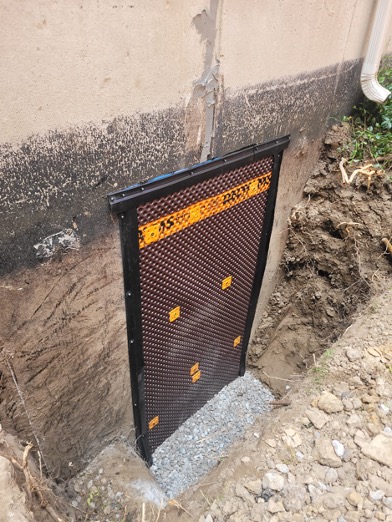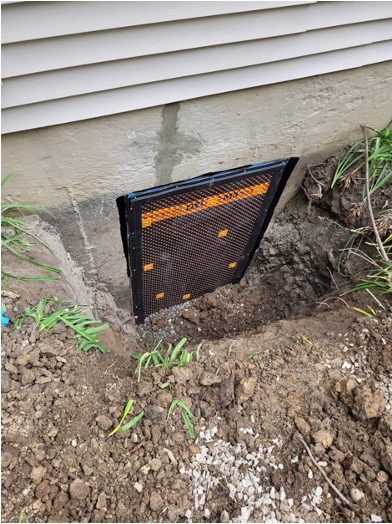Exterior Crack Repair
Basement Waterproofing Process
We begin by repairing all foundation cracks with a hydraulic cement which expands as it cures, to eliminate the damage.

Finally, to obtain superior and permanent protection we hang an extremely durable dimpled Delta –MS membrane. This extends from grade level over and including the footing.
The plastic dimpled core provides compressive strength to keep headwater pressure off the face of the wall, and creates a drainage space (air-gap) between the surrounding soil and wall, that allows high capacity flow to the foundation drainage system. The polymeric film provides additional protection to the elastomeric waterproofing membrane and also protects it during backfill. This process effectively provides your foundation walls with three lines of defense.
If you are going to have your foundation excavated, give yourself the peace of mind that comes from hiring a foundation waterproofing contractor that utilizes the most advanced materials available, and applies them with the experience needed to get the job done right once and for all.
There remains a very noticeable difference in a home that has been waterproofed with our process, compared to a home that has been dampproofed with tar and plastic or other inferior methods.
Successfully blocking the subsurface water from basement walls is not enough. The water that enters the ground around your foundation will not disappear.
A drainage system must be installed to intercept the water that has been blocked by the waterproofing materials otherwise the water will cause immense hydrostatic pressure to build up outside the foundation walls.
Water doesn’t stack very well so it usually finds its way to the area under the basement floor and then rises from under the floor as it tries to seek its own level.
Floods can and often do occur without a single drop of water penetrating the basement walls. Waterproofing without proper drainage is destined to fail, and vice versa in many cases.
There are different methods of moving the water that waterproofing has blocked from penetrating the walls. Installing a sump pit with a good quality pump and battery back-up system or to the city storm drain. Some municipalities require the installation of a sump pit for all retrofit situations.
Prior to connecting the new weeping tile we check the condition of the existing tile. It may require a high pressure flush to ensure it is working properly. This can be done without any additional excavation.





